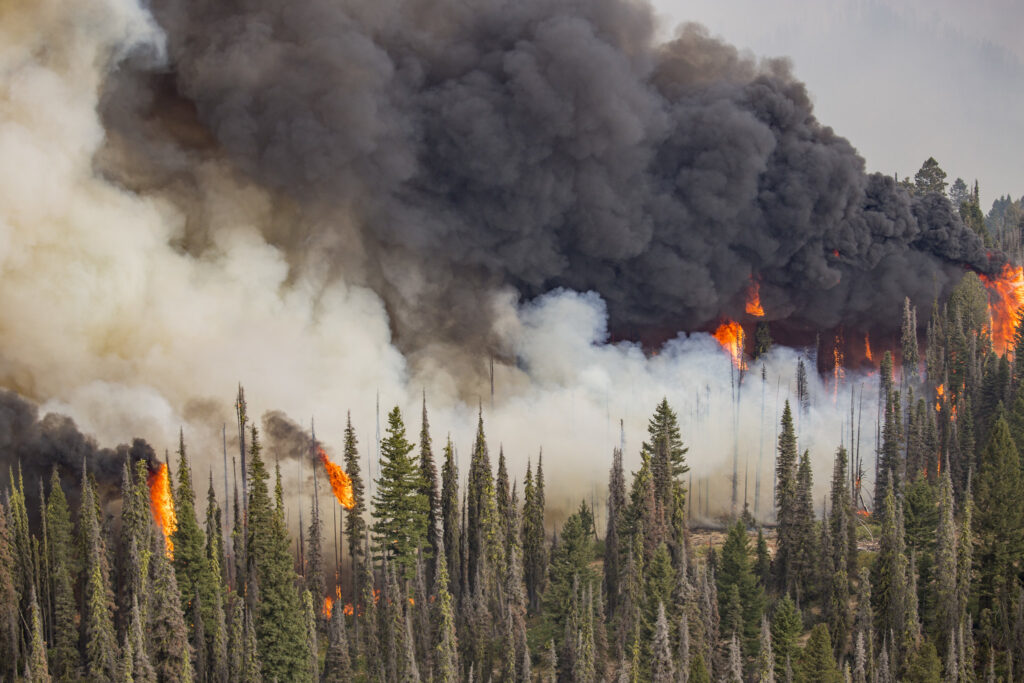
This article was originally published in National Review.
Despite some last-minute drama over the fate of the permitting-reform proposal by Senator Joe Manchin (D., W.Va.), one thing is clear: Democrats and Republicans are finally beginning to reckon with the red tape that hamstrings everything from renewable-energy infrastructure to natural-gas pipelines.
But energy projects aren’t the only area where the elimination of such red tape is needed: America’s growing wildfire crisis has also been exacerbated by bureaucratic sluggishness, and the problem deserves bipartisan attention.
As dense fuel loads have accumulated after decades of fire suppression, wildfires are wreaking havoc in western states. Between 2017 and 2021, wildfires consumed an average of about 8 million acres each year—more than double the annual average recorded in the 1990s. In three of the past seven years, over 10 million acres have been burned. So far this year, nearly 7 million acres have burned, with large fires still raging in California, Idaho, Montana, Oregon, and Washington.
There is now broad agreement among ecologists and fire scientists that forest restoration—including the use of controlled burns and selective thinning—preempts devastation by clearing brush and other vegetative fuels before they go up in smoke. All too often, however, environmental review and permitting processes prevent this important work from being completed in time—and the homes, wildlife habitat, and air quality it is meant to protect end up damaged or even destroyed.
A recent study by our colleagues at the Property and Environment Research Center (PERC) found that from the time environmental reviews are initiated for U.S. Forest Service projects, it takes an average of 3.6 years to begin mechanical-thinning treatments on the ground, while prescribed burns take 4.7 years to start on average. Mechanical-thinning and prescribed burn treatments that require environmental-impact statements—the most stringent category of analysis—are even slower, taking an average of approximately five years and seven years, respectively.
These protracted timelines have very real consequences. In some cases, forest-management projects that are delayed end with the destruction of the habitat they were meant to protect. One thinning project in Northern California was held up for more than a decade by activists who claimed they wanted to protect endangered spotted owls. As the project sat in limbo, a wildfire burned the owl habitat to the ground last year. A few years ago, a similar story played out in Montana, when wildlife habitat went up in flames after a treatment project spent seven years stuck in a combination of analysis, delays, and litigation.
Some of the fallout from fires is farther flung. Last summer, wildfires in the western United States released 130 million tons of carbon dioxide, equivalent to about a year’s worth of pollution from 25 million cars. A recently published study by Stanford University researchers found that smoke from western wildfires is “reversing decades of policy-driven improvements in overall air quality.” It also noted that the number of people subjected to extreme wildfire smoke has risen 27-fold over the past decade.
Several high-profile cases over the past couple of years have demonstrated the risk-reducing benefits of forest treatments. California, Montana, New Mexico, and Oregon have all provided examples of wildfires that did much less damage than they could have or were contained faster than expected because past treatments made them easier to fight. Likewise, officials credited prescribed burns with helping save 2,000-year-old giant sequoias from wildfires that swept through Yosemite National Park this summer.
Fortunately, lawmakers are taking notice. Several current bills that aim to reduce or eliminate red tape for projects that would mitigate fire risk have support from Democrats and Republicans alike. Late last month, Senators Manchin and John Barrasso (R., Wyo.) introduced the Promoting Effective Forest Management Act, which would require federal agencies to increase treatment goals and harness existing options for streamlining environmental reviews. Two other bills with bipartisan support—the Root and Stem Act, co-sponsored by Senators Dianne Feinstein (D., Calif.) and Steve Daines (R., Mont.), and the Save Our Sequoias Act, introduced by Representative Scott Peters (D., Calif.)—seek to simplify and speed up the regulatory process that governs forest treatments. Similarly, another bill from Senator Daines would address duplicative procedural delays for forest projects that stem from the contentious Cottonwood legal decision, which the Obama administration warned could “cripple the Forest Service.” In July, the bill passed out of the Senate Committee on Energy and Natural Resources in a bipartisan 16–4 vote.
Earlier this year, the Biden administration released an ambitious plan to treat an additional 50 million acres of forestland over the next decade to reduce wildfire risk. But it will succeed only if Congress and the administration can work together to address the permitting issues that delay and derail forest management. While federal energy permitting has everyone’s attention on Capitol Hill, Senator Manchin and his colleagues should harness the momentum of permitting reform and use it to help tackle the wildfire crisis while they still can.




